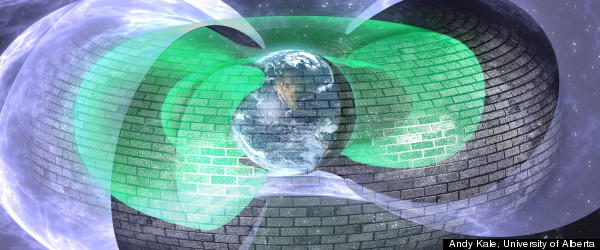|

The Earth is surrounded by "killer electrons," and it turns out one of the only things protecting us from them is an invisible force field of the type usually seen in sci-fi flicks.
These electrons, part of the two Van Allen radiation belts that surround the planet, can knock satellites out of commission and threaten astronauts. But in a new study in the journal Nature, scientists say they've discovered that these electrons suddenly stop at about 7,200 miles above the surface of the Earth.
“It’s almost like theses electrons are running into a glass wall in space,” professor Daniel Baker, director of CU-Boulder’s Laboratory for Atmospheric and Space Physicsand lead author of the study, said in a news release. “Somewhat like the shields created by force fields on 'Star Trek' that were used to repel alien weapons, we are seeing an invisible shield blocking these electrons. It’s an extremely puzzling phenomenon.”
While it had been speculated that Earth's magnetic fields or even radio signals from human transmitters were blocking the electrons, Baker and his team say neither possibility explains the sudden wall the electrons appear to be hitting.
"When you look at really energetic electrons, they can only come to within a certain distance from Earth," Shri Kanekal, deputy mission scientist for the Van Allen Probes at NASA's Goddard Space Flight Center and a co-author on the paper said. "This is completely new. We certainly didn't expect that."
One possibility is the noisy hiss emerging from the planet's plasmasphere. This hiss, which sounds like white noise, is caused by low-frequency electromagnetic waves, and those waves could be scattering the electrons, which travel at speeds of 100,000 miles per second.
But Baker believes that's not the only reason for the "force field" effect.
“I think the key here is to keep observing the region in exquisite detail, which we can do because of the powerful instruments on the Van Allen probes," Baker was quoted as saying. "If the sun really blasts the Earth’s magnetosphere with a coronal mass ejection, I suspect it will breach the shield for a period of time."
Baker and his fellow scientists have been using data from NASA's two Van Allen Probes for their research. Beyond knowing that there's a pretty cool force field above the planet, learning about it and how it functions can help protect spacecraft.
| 




